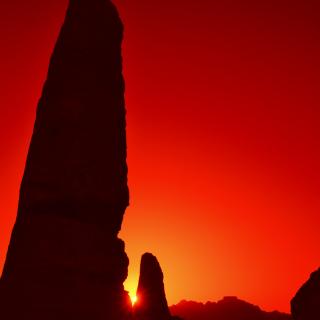Benítez de Lugo Enrich, L.; Esteban, C.
Bibliographical reference
SPAL Revista de Prehistoria y Arqueología
Description
Resumen: Este trabajo presenta los resultados arqueoastronómicos de un proyecto interdisciplinar que estudia yacimientos de La Mancha fechados durante la Prehistoria Reciente. El centro ceremonial monumentalizado de Castillejo del Bonete muestra un marcador del amanecer del solsticio de invierno en la montaña más peculiar de su horizonte, así como alineaciones con este y otros eventos solares singulares, tales como el equinoccio y el solsticio de verano. Parece existir una correspondencia entre las orientaciones de algunas de las principales estructuras arquitectónicas del monumento y las que presentan dos de las galerías principales de una cueva natural que se encuentra justo debajo. Los marcadores y las orientaciones hacia el amanecer del solsticio de invierno pueden también estar presentes en otros sitios contemporáneos cercanos, como son el abrigo funerario del Cerro Ortega y la motilla del Azuer. Castillejo del Bonete constituye la primera evidencia de un marcador solar en un túmulo prehistórico de la península ibérica, lo que indica que su ubicación fue cuidadosamente elegida. Las alineaciones definidas por sus estructuras refuerzan su simbolismo astronómico. Los resultados de este estudio demuestran la importancia de los elementos astrales en el mundo funerario y religioso de la Prehistoria Reciente de La Mancha, en donde el orto del solsticio de invierno parece que tuvo un especial protagonismo.
Abstract: We present archaeoastronomical results of an interdisciplinary project to study Bronze Age and Chalcolithic in the Spanish region of La Mancha. We find that winter solstice sunrise was of special importance in the funerary – and perhaps religious – practises of these peoples. The impressive megalithic monumental complex of Castillejo del Bonete shows a remarkable marker of the winter solstice sunrise on the most peculiar mountain of its horizon as well as alignments with this and other singular solar events as equinox and summer solstice. There seems to be a correspondence between the orientations of some of the main architectural structures of the monument and the general arrangement of two of the main galleries of a natural cave that lies just beneath it. Markers and orientations to the winter solstice sunrise seem to be present in other nearby contemporary sites such as the necropolis of Cerro Ortega and the motilla of the Azuer. Castillejo del Bonete stands as the first evidence of a solar marker in a megalithic site of the Iberian Peninsula, indicating that the precise location of the monument was carefully chosen. The alignments defined by several of its structures further reinforce its astronomical symbolism.
Related projects
The main objective of this project is to study the importance of astronomy as a fundamental part of human culture and civilization from Paleolithic to the present day. Our interest is mainly devoted to the people of the ancient Mediterranean cultures from the Atlantic to the Middle East, with a special dedication to Spain, its geographical
Juan Antonio
Belmonte Avilés
